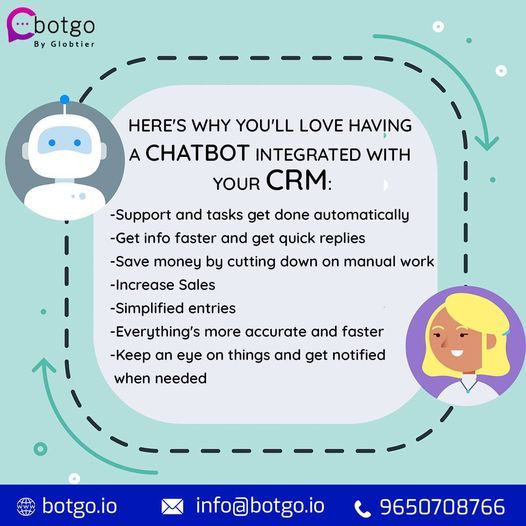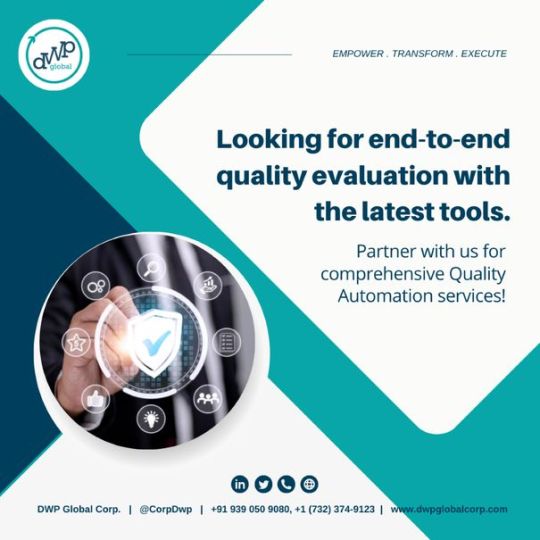#process automation
Text
7 notes
·
View notes
Text

Chatbots are an important addition to your CRM system. That's why, Circle One CRM teams up with Botgo Chatbot to revolutionize your business processes. Automate tasks, speed up responses and boost sales effortlessly. Say hello to efficiency with our dynamic duo!
𝐒𝐰𝐢𝐭𝐜𝐡 𝐭𝐨 𝐁𝐨𝐭𝐠𝐨 𝐍𝐨𝐰!
𝗖𝐨𝐧𝐭𝐚𝐜𝐭 𝐮𝐬 𝐭𝐨𝐝𝐚𝐲 𝐟𝐨𝐫 𝐚 𝐟𝐫𝐞𝐞 𝟔𝟎 𝐝𝐚𝐲𝐬 𝐭𝐫𝐢𝐚𝐥, 𝐃𝐞𝐦𝐨 & 𝐐𝐮𝐨𝐭𝐞𝐬!
𝗙𝗼𝗿 𝗺𝗼𝗿𝗲 𝗶𝗻𝗳𝗼𝗿𝗺𝗮𝘁𝗶𝗼𝗻:👇
🌐𝗩𝗶𝘀𝗶𝘁 𝗨𝘀: https://botgo.io
0 notes
Text
Difference Between Intelligent Process Automation and Robotic Process Automation
Automated and Intelligent technologies are already making an impact here, and will definitely contribute even more in the upcomming years. Recently, two innovative technologies have attracted a lot of interest in the field of process optimization, i.e. IPA (Intelligent Process Automation) and RPA (Robotic Process Automation). These words may sound similar, but they have very different approaches to digital transformation, and the outcomes you might expect from them also vary.

0 notes
Text
Streamlining Manufacturing Operations through Process Automation Solutions

The manufacturing industry is undergoing a transformative shift with the integration of advanced technologies to enhance efficiency, reduce costs, and improve overall productivity. One of the key drivers of this transformation is process automation, a revolutionary solution that leverages cutting-edge technologies to streamline operations and optimize resource utilization. In this article, we will explore the significance of process automation in the manufacturing sector, its key components, benefits, and the potential challenges that organizations may face during implementation.
Understanding Process Automation in Manufacturing
Process automation involves the use of technology to execute recurring tasks and processes without human intervention. In the manufacturing industry, this can range from automating simple repetitive tasks to orchestrating complex production processes. Key components of process automation in manufacturing include:
Sensors and IoT Devices:
These are deployed to collect real-time data from various points in the production line. Sensors monitor equipment conditions, detect defects, and capture critical performance metrics.
Industrial Robotics:
Automated systems and robots are employed for tasks such as assembly, welding, painting, and packaging. These robots enhance precision, speed, and consistency in manufacturing processes.
PLC (Programmable Logic Controllers):
PLCs are essential for controlling and automating machinery. They are programmed to manage specific tasks, ensuring that processes are executed accurately and efficiently.
SCADA (Supervisory Control and Data Acquisition):
SCADA systems provide a centralized platform for monitoring and controlling industrial processes. They collect and analyze data from various sources, enabling real-time decision-making.
MES (Manufacturing Execution Systems):
MES software integrates with other systems to manage and optimize production on the shop floor. It provides real-time data on production schedules, inventory levels, and quality control.
Benefits of Process Automation in Manufacturing
Implementing process automation solutions in the manufacturing industry yields a myriad of benefits that contribute to operational excellence and competitive advantage:
Manufacturers face a myriad of challenges, from increasing competition and fluctuating market demands to rising operational costs. In this complex environment, manual and traditional methods of production management fall short in meeting the demands of modern industry standards. Here’s where process automation steps in to revolutionize manufacturing processes.
Enhanced Efficiency and Productivity:
Process automation optimizes workflows by reducing manual intervention, thereby minimizing errors and enhancing overall efficiency. Automated systems can operate 24/7, ensuring continuous production and significantly increasing output compared to traditional methods.
Cost Reduction:
Automation helps manufacturers cut costs by streamlining processes, minimizing waste, and improving resource utilization. While the initial investment in automation technology may seem substantial, the long-term savings in labor, energy, and materials often outweigh these upfront expenses.
Consistent Quality:
Automated systems ensure consistent product quality by eliminating variations caused by human error. Precision and accuracy in manufacturing processes lead to standardized outputs, meeting or exceeding customer expectations and regulatory compliance.
Flexibility and Scalability:
Modern automation solutions are designed to be flexible and scalable, allowing manufacturers to adapt quickly to changes in production volume or product specifications. This scalability ensures that the system can grow with the business, accommodating future expansion or modification.
Increased Production Capacity:
Automated systems can operate 24/7 without the need for breaks, contributing to increased production capacity and quicker time-to-market for products.
Real-time Monitoring and Analytics:
Process automation provides real-time insights into production processes, enabling quick identification of bottlenecks, inefficiencies, and areas for improvement.
Best Practices for Successful Automation Implementation
Comprehensive Planning:
A thorough analysis of current processes, identification of automation opportunities, and a well-defined roadmap are crucial for successful automation implementation. This planning phase should also include a clear communication strategy to keep all stakeholders informed and engaged.
Investment in Workforce Training:
To address the workforce adaptation challenge, investing in training programs is essential. Providing employees with the necessary skills to operate, monitor, and maintain automated systems ensures a more successful integration.
Gradual Implementation:
Rather than attempting a complete overhaul of existing processes, a phased approach to automation implementation is often more effective. Starting with smaller, less critical processes allows for smoother integration and helps identify and address challenges early on.
Collaboration with Automation Experts:
Manufacturers should collaborate with automation experts and technology providers to ensure the selection of the most suitable automation solutions for their specific needs. Working closely with experts can also facilitate a smoother integration process.
Challenges in Implementing Process Automation
While the benefits of process automation in manufacturing are substantial, organizations may encounter challenges during the implementation phase:
High Initial Investment:
The upfront costs of implementing automation systems can be significant. Organizations need to carefully evaluate the return on investment (ROI) over the long term.
Workforce Reskilling:
The introduction of automation may require employees to acquire new skills to operate and maintain automated systems. Organizations need to invest in training programs to bridge the skills gap.
Integration Complexity:
Integrating automation systems with existing infrastructure and legacy systems can be complex. Seamless integration is crucial to avoid disruptions in operations.
Cybersecurity Concerns:
As manufacturing processes become more connected, the risk of cyber threats increases. Organizations must implement robust cybersecurity measures to protect sensitive data and critical infrastructure.
Conclusion:
Process automation is a pivotal solution for the manufacturing industry, driving operational excellence, cost savings, and improved competitiveness. As technologies continue to evolve, manufacturers must embrace automation to stay ahead in a rapidly changing landscape. While challenges exist, careful planning, strategic implementation, and ongoing investment in employee training and cybersecurity measures can ensure a smooth transition to a more automated and efficient manufacturing environment. The future of manufacturing lies in the hands of those who leverage the power of automation to adapt, innovate, and thrive in the digital age.
Original Source: Here
0 notes
Text
1 note
·
View note
Text
Process Automation: Streamlining Workflows for Increased Productivity
Businesses today are constantly looking for ways to optimise efficiency and increase productivity. One of the most effective strategies used by forward-thinking organisations is process automation. By leveraging technology to streamline workflows and eliminate manual tasks, businesses can unlock a host of benefits, including improved efficiency, reduced costs, and enhanced scalability. In this blog, we’ll discuss process automation, its benefits, and how organisations can implement it to drive success.
https://elde.tech/process-automation-workflows-increased-productivity/
0 notes
Text
https://selfgrowth.com/articles/benefits-of-process-automation-in-finance-business
Gain insights into the game-changing benefits of finance automation. Explore our blog to understand how automation transforms financial processes, enhances efficiency, and propels your business forward.
0 notes
Text
0 notes
Text
Fully Integrated ERP Solution for Education Sector

In the rapidly evolving digital landscape, educational institutions are investing heavily in technology to enhance efficiency and reduce operational costs. To streamline internal processes and communication, Education Resource Planning (ERP) systems have become essential. PrideEdu stands out as a fully integrated ERP solution in the education sector, renowned for its scalability, security, and customizable features. It facilitates smooth daily activities for administrators and teachers, ensuring effective institution management. Additionally, it keeps parents updated on their children's progress. The benefits of PrideEdu include process automation, simplified classroom management, optimized learning experiences, instant access to actionable insights, and streamlined administrative tasks such as admissions, attendance, and fee management. It also offers real-time access to data, user-friendly interfaces, and integrated modules for comprehensive management. By reducing manual workloads and facilitating communication among stakeholders, PrideEdu contributes to smoother operations and improved educational outcomes.
For more Information visit: https://pridesys.com/product/pridecut/
Contact us:
E-mail: [email protected];
Phone: +8801550000003-8, 01550000035
#PrideEdu#ERP solution#Education sector#Institution management#Process automation#Classroom management#Learning experiences#Administrative tasks#User-friendly interfaces#Stakeholder communication
0 notes
Text
Master the Accounts Receivable Workflow Process
Delve into our comprehensive guidebook aimed at refining your accounts receivable processes and driving your business toward financial success. In today's rapidly changing business environment, adept accounts receivable management is crucial for maintaining strong cash flow and profitability. Timely payments fulfill financial obligations and cultivate lasting customer relationships, fostering satisfaction and loyalty.
Our detailed handbook offers a structured approach to enhancing your accounts receivable procedures. From establishing clear payment terms to incorporating automated invoicing systems, you'll discover practical strategies and best practices that are easily implementable. Moreover, we emphasize the importance of maintaining transparent communication channels with clients and navigating challenging situations like delayed payments.
Learn how to leverage technology, data analysis, and customer relationship management tools to streamline your process of accounts receivable and achieve optimal efficiency. By following our expert advice and proven methods, you can boost cash flow, reduce outstanding accounts receivable, and strengthen the overall financial stability of your business.
Take charge of your workflow today and unlock the vast potential of your business!
1 note
·
View note
Text








Turn Insights into Action with Marketing Automation, Connect seamlessly with your audience, and achieve remarkable growth.
Dive into the magic of Marketing Automation! With a 22% growth & 45% more qualified leads, it's the game-changer for global businesses.
#crm#getoncrm#technology#business#automation#process automation#growth#crm solution#marketing automation
0 notes
Text

To all the businesses who are looking to streamline operations and boost productivity! Introducing the Botgo Platform – your all-in-one solution for achieving unparalleled business efficiency. Optimize your resources and Decomplexify the most intricate technologies with Botgo's:
Chatbot Solutions
Process Automation
CRM Service
𝐒𝐰𝐢𝐭𝐜𝐡 𝐭𝐨 𝐁𝐨𝐭𝐠𝐨 𝐍𝐨𝐰!
𝗖𝐨𝐧𝐭𝐚𝐜𝐭 𝐮𝐬 𝐭𝐨𝐝𝐚𝐲 𝐟𝐨𝐫 𝐚 𝐟𝐫𝐞𝐞 𝟔𝟎 𝐝𝐚𝐲𝐬 𝐭𝐫𝐢𝐚𝐥, 𝐃𝐞𝐦𝐨 & 𝐐𝐮𝐨𝐭𝐞𝐬!
𝗙𝗼𝗿 𝗺𝗼𝗿𝗲 𝗶𝗻𝗳𝗼𝗿𝗺𝗮𝘁𝗶𝗼𝗻:👇
🌐𝗩𝗶𝘀𝗶𝘁 𝗨𝘀: https://botgo.io
0 notes
Text
Experience The best Quality Automation Services In The USA
Drive Innovation and Efficiency with Quality Automation Services from DWP Global Corp in the United States. For more information, visit the website. https://dwpglobalcorp.com/our-services/quality-automation-services/

1 note
·
View note
Text
Unveiling the nuances between hyperautomation and automation. Dive into the distinctions to choose the right solution for your needs. Explore the advanced capabilities of hyperautomation versus the simplicity of traditional automation.
0 notes
Text

Sigma Solve's team harnessed the power of OpenBots RPA platform and Google's Tesseract OCR to automate Pisces Healthcare Solutions purchase order processing. Sigma Solve developed a flexible bot capable of processing purchase orders received in various formats. By automating the purchase order processing with Sigma Solve's RPA solution, Pisces Healthcare Solutions achieved a significant 75% reduction in manual processing.
0 notes